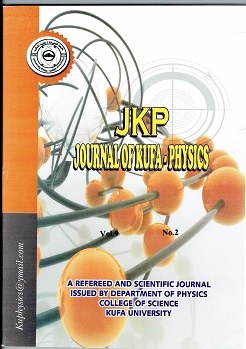No-Core optical fibers sensor for detecting hemoglobin concentration (HB) based on the Surface Plasmon resonance.
DOI:
https://doi.org/10.31257/2018/JKP/2022/140209Keywords:
Biosensor, Hemoglobin (HB) , Optical fiber , Surface Plasmon resonance , Refractive indexAbstract
In this work, a fiber-optic biomedical sensor was manufactured to detect hemoglobin percentages in the blood. SPR-based coreless optical fibers were developed and implemented using single and multiple optical fibers. It was also used to calculate refractive indices and concentrations of hemoglobin in blood samples. An optical fiber, with a thickness of 40 nanometers, was deposited on gold metal for the sensing area to increase the sensitivity of the sensor. The optical fiber used in this work has a diameter of 125μm, no core, and is made up of a pure silica glass rod and an acrylate coating. The length of the fiber was 4cm removed buffer and the splicing process was done. It is found in practice that when the sensitive refractive index increases, the resonant wavelength increases due to the decrease in energy.
Downloads
Downloads
Published
How to Cite
Issue
Section
Categories
License
Copyright (c) 2023 Mustafa H.Nida, Soudad S. Al-Bassam

This work is licensed under a Creative Commons Attribution 4.0 International License.
Journal of Kufa-Physics is licensed under the Creative Commons Attribution 4.0 International License, which allows users to copy, to create extracts, abstracts, and new works from the Article, to alter and revise the Article, and to make commercial use of the Article (including reuse and/or resale of the Article by commercial entities), provided the user gives appropriate credit (with a link to the formal publication through the relevant DOI), provides a link to the license, indicates if changes were made and the licensor is not represented as endorsing the use made of the work. The authors hold the copyright for their published work on the JKP website, while KJP is responsible for appreciating citation for their work, which is released under CC-BY-4.0 enabling the unrestricted use, distribution, and reproduction of an article in any medium, provided that the original work is properly cited.













